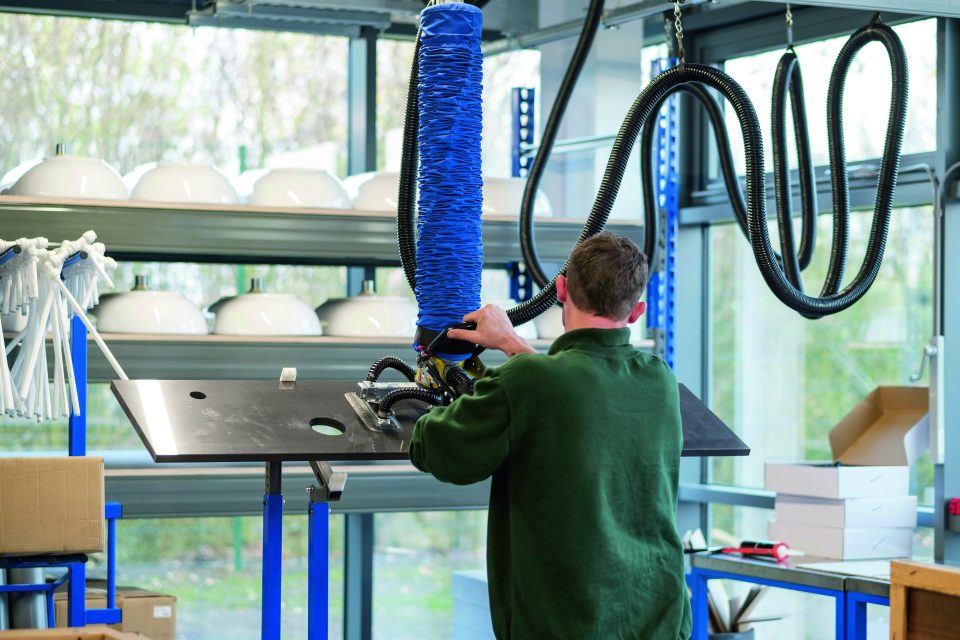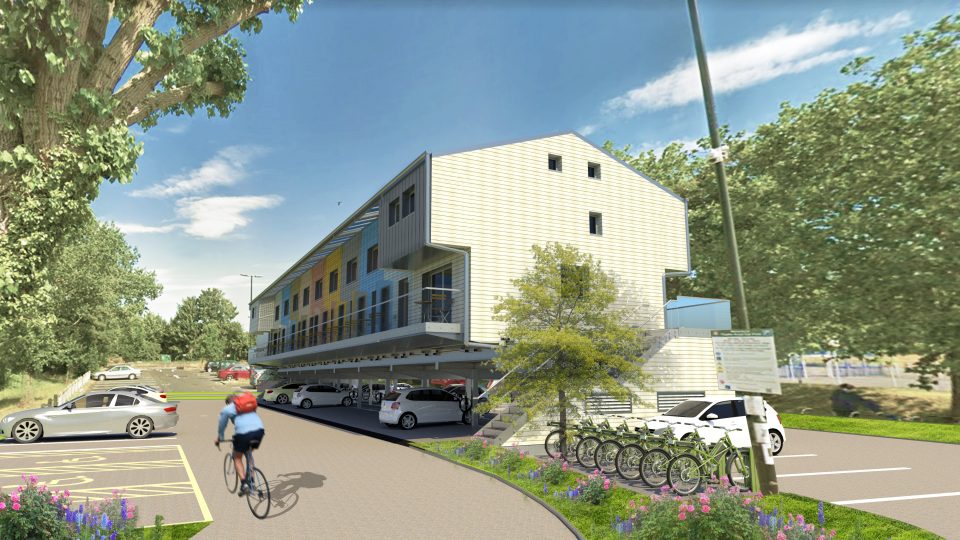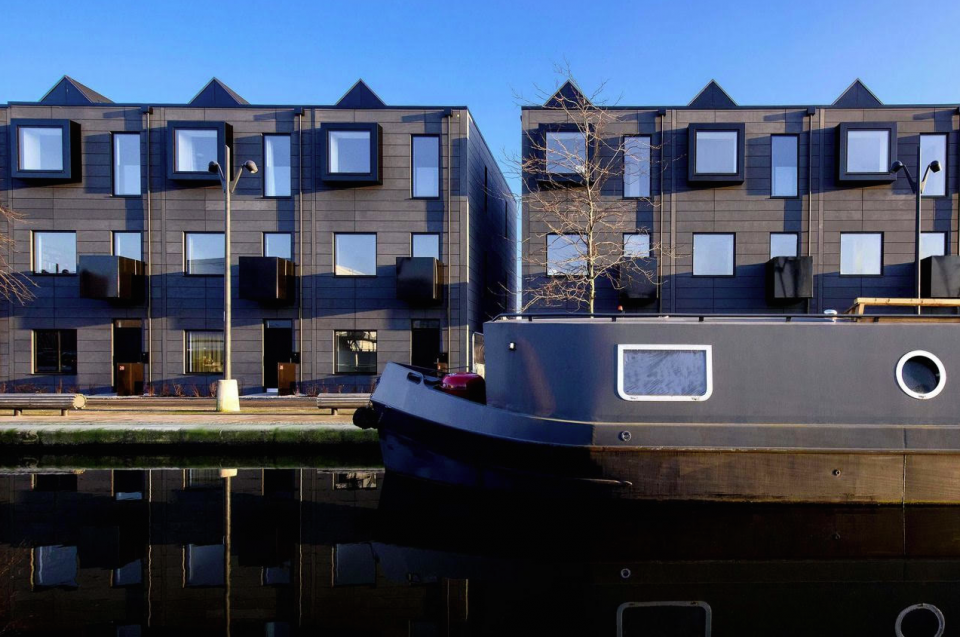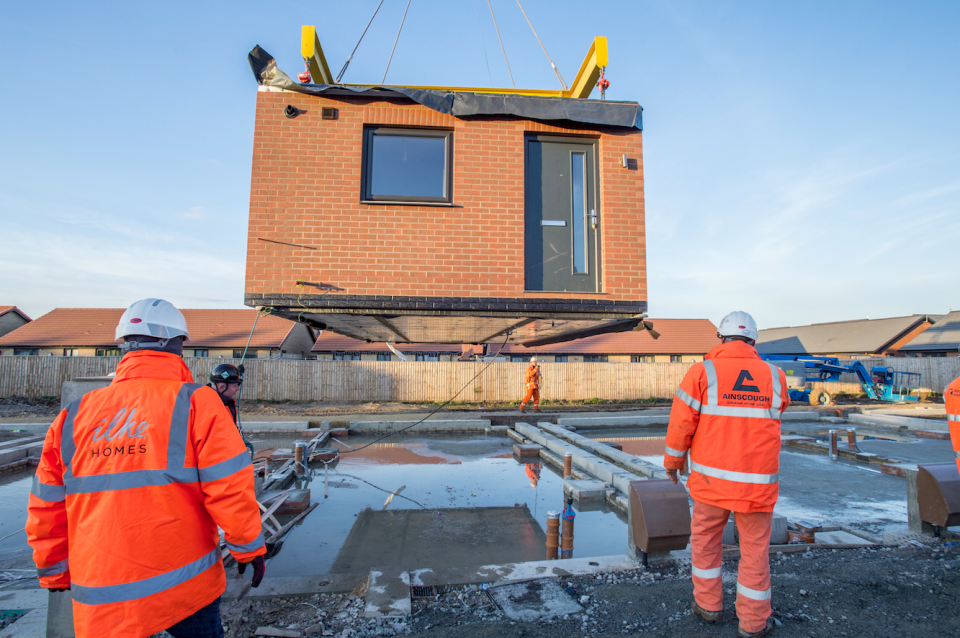The modular model: Can factory-built homes solve the housing crisis?

picture a vast warehouse somewhere in the north of England. Workers in hard hats are poring over intricate plans against a background of humming machinery. Robot arms slice through sheets of metal and wood as they pass by on a conveyor belt, precisely cutting out shapes that look like huge versions of Airfix models. Across the production line, windows are carefully fitted on to a glossy, new frame.
The unit is then packed on to a lorry to be driven hundreds of miles across the country, where its new owner will arrive in a couple of weeks.
This isn’t a car we’re talking about, by the way. It could be your next home.
Dave Sheridan is the executive chairman of Ilke Homes, which from its Harrogate factory builds neat, modern family homes that wouldn’t look out of place on any suburban housing estate. It completes eight on an average day. “We want to go where the housing need is greatest,” he says. “Most people want to live in a house with a front door and a back door.”

Modular construction – homes being built in factories, in other words – is being touted by some as a high-tech solution to the UK’s housing crisis. For others, these homes are no different to the low-quality, temporary prefab housing that went up across London in the 1950s to replace homes lost in the Blitz. So can a home built on a production line ever be a desirable place to live?
This might seem like cutting-edge new technology to us, but – somewhat predictably – countries including Germany and Japan have been doing it for decades. The latter’s largest housebuilder, Sekisui House, has produced more than 2.4m modular homes since 1960, and has now signed a deal with the UK government and developer Urban Splash to set up a factory and build 2,000 homes a year here over the next decade. Although it’s a huge corporation, Sekisui brands itself as a friendly homebuilder with a social conscience.
Meeting housing requirements in the UK, according to government estimates, means building 300,000 additional homes a year – a target that was missed by around 82,000 in both 2017 and 2018. Ilke’s homes cost between £65,000 and £79,000 to buy, although you also need to have a plot of land to put it on.

The real selling point is speed. Houses and apartments are built as a series of identical blocks or ‘modules,’ often with bathrooms and kitchens already fitted. Because walls and floors are precisely engineered and there are no real-world variables like bad weather, a home can be made in a couple of weeks. The modules are then transported to the site and craned in on top of each other to make a house, or stacked around a concrete core to create an apartment block. Projects vary, but using modular elements usually cuts construction time by at least half.
These are not piled-up, boxy apartments, but large, light, airy family homes. “They have a love of humanity, they understand how people want to live and what makes homes better and more attractive,” says Urban Splash founder Tom Bloxham. For example, Sekisui plants five indigenous trees around each of its homes – ‘three for birds and two for butterflies’. Its utopian vision of the world extends to humans, too. In Japan, homes are generally considered worthless and demolished after 30 years – so Sekisui buys them back and retrofits them before re-selling them to cash-strapped youngsters at a low cost.
I can’t see how you can create great architecture with modular
Peter Leiper, architect at CZWG
Urban Splash has already been building its own modular homes under its HoUSe brand. They are a modern incarnation of perennially popular Victorian and Georgian properties – high ceilings, three storeys, big windows – but wrapped up in a contemporary exterior. “If all you want is a house that looks like it’s built out of brick, build it out of brick,” says Bloxham. “For us, it’s more about how they perform.”
On the other end of the scale are the vast apartment blocks that have predominated in London so far. Tide Construction and Vision Modular Systems’ 101 George Street in Croydon, which is currently being built, would have been the world’s tallest modular tower at 135 metres and 44 storeys, but a block planned for Singapore will surpass it by five metres. “If you’re going to build a 44-storey building, it has to look great,” says Simon Bayliss, from project architect HTA Design.

101 George Street will be covered in iridescent, dark green triangulated panels (pictured, top) that reflect the area’s art deco architecture, and there are certainly worse-looking towers in London. But some believe modular construction is at odds with attractive design. “I can’t see how you can create great architecture with modular,” says Peter Leiper, architect at CZWG. “You have to create [buildings] that are quite linear, where everything stacks up one above the other.”
On completion, 101 George Street will be one of the growing number of build-to-rent blocks in London, owned by a corporate landlord with the 546 flats rented out to young professionals.
Some argue this is the only model – that modular only works with homes that aren’t for sale. This is because, no matter how quickly you build them, houses take time to sell – and housebuilders don’t want to end up with stock they can’t shift. “It’s being hailed as the great saviour of housing in Britain, but speed is the last thing housebuilders want,” says Leiper.
One area where this isn’t an issue is affordable housing. Demand is bottomless, and factory-built homes are hard-wearing and cheap to heat. Boklok, the modular company owned by Ikea, has already struck a deal with Worthing Council in West Sussex to build 162 flats, of which a third will be handed over to the council at cost for affordable housing. It also allows homes to be built in places where “conventional construction won’t work”, according to Dr Rehan Khodabuccus, operations director at Zedpods. His firm has installed homes on stilts above car parks, for example.
The sticking point is that it’s not cheaper than building a bricks-and-mortar home, because so much has been invested in developing the technology. “It will get cheaper, in the same way that cars and TVs eventually get cheaper,” says Bloxham.

Modular homes are also eco-friendly, which is significant given that the construction industry accounts for 38 per cent of the world’s energy-related carbon emmissions. Bayliss thinks it’s “the only way” the UK can achieve its target to reach net zero emmissions by 2050, and this could be a selling point for eco-conscious home buyers. But the average person still doesn’t know what a modular home actually is. “It’s not penetrated the mainstream yet,” says Rory O’Hagan, architect at Assael. “But if you’re delivering really great homes, why should the technology be the first consideration for the purchaser?”
The idea that these are small, identikit, prefab homes will be a challenge to surmount, and the people building them know it. “We owe it to the British public to build only high-specification, quality, permanent housing that will create popular, aspirational dwellings,” says Khodabuccus. But given the need for new housing isn’t going away, the production lines look set to keep rolling.